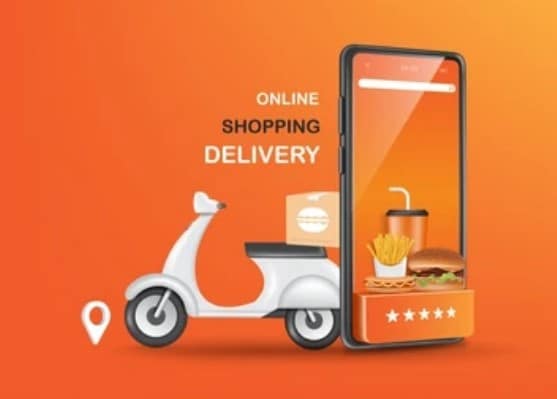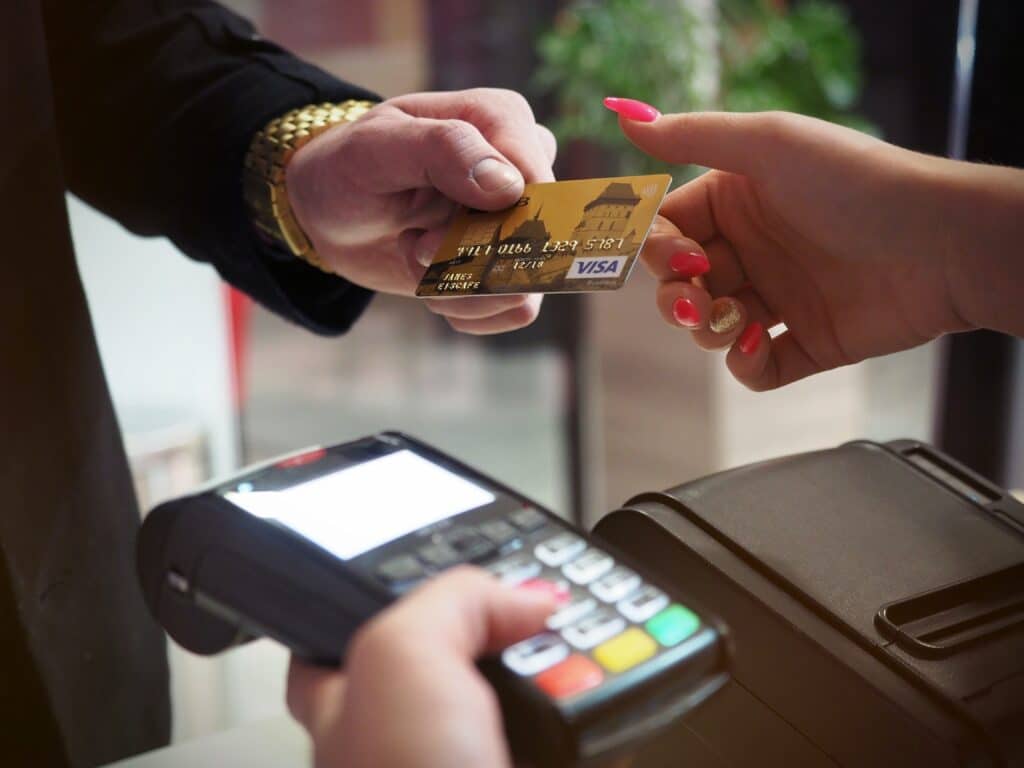
Shopping online using smartphones and tablets offers immense convenience, allowing you to make purchases from anywhere, whether it’s the comfort of your home, while traveling, or even during vacations. It enables you to explore various online stores and make instant purchases, providing the advantage of seizing sales and deals at any time, regardless of store hours or location. Furthermore, the proliferation of mobile payments has significantly fueled the growth of ecommerce sales. Presently, mobile payments have gained substantial popularity and played a pivotal role in propelling ecommerce sales. With secure and efficient payment systems in place, consumers can effortlessly make purchases using their smartphones or tablets. This additional convenience has further bolstered the surge in online shopping. Notably, mobile payment options such as Apple Pay, Google Wallet, Samsung Pay, and banking apps facilitate seamless transactions for customers.
The rise of mobile shopping in ecommerce
The availability of secure payment options has played a significant role in the growth of mobile shopping. Many mobile shopping apps and websites now offer secure payment gateways, ensuring that users can enter their payment information without worrying about fraud or identity theft. This has not only increased consumer trust in mobile shopping but has also fueled its expansion. Moreover, businesses have also benefited from mobile shopping as it provides them with a new avenue to connect with and engage customers. By utilizing mobile apps and notifications, businesses can send targeted promotions and updates to users, thereby increasing their chances of making a sale. Overall, the rise of mobile shopping has revolutionized the ecommerce industry, making it more convenient and accessible for consumers while also offering new opportunities for businesses.
Rise of mobile shopping has transformed consumer behavior and disrupted traditional retail models
The impact of mobile shopping on traditional retail and people’s shopping habits remains significant as technology advances and smartphones become increasingly essential. This ongoing trend in ecommerce not only revolutionizes the way individuals make purchases but also presents businesses with new opportunities for expansion. With the ability to browse and purchase products at any time and from anywhere, customers are no longer confined by store schedules or physical locations. As a result, ecommerce businesses have experienced enhanced outreach and an increased customer base.
Mobile shopping has led to the rise of on-demand services like food delivery and ridesharing

Mobile shopping in ecommerce is currently experiencing a surge in popularity due to its convenience and accessibility. This shift towards mobile platforms has revolutionized industries such as food delivery and ridesharing, as it allows people to easily order meals or book rides with just a few taps on their phones. This convenience has brought about significant changes in various sectors, leading to the adoption of new business strategies that prioritize the preferences of modern consumers. Furthermore, mobile shopping has empowered businesses to personalize their marketing approaches by analyzing customer data and tracking their behavior. This enables companies to create targeted advertisements and recommendations that cater to the unique needs and interests of each individual.
Mobile shopping is convenient and allows customers to make purchases anytime and anywhere
Mobile shopping has completely transformed the shopping experience by making it more convenient. Through the use of apps and websites, people can effortlessly browse and buy various products with just a few taps on their phones. This simplicity has resulted in impulsive purchasing habits and allowed businesses to reach a wider range of customers. Furthermore, mobile shopping offers valuable information to businesses about customer preferences and behavior.
The convenience of shopping on mobile devices
Shift4 ecommerce has seen a significant rise in the popularity of mobile shopping in recent years. Customers can now conveniently browse and purchase products using their mobile devices, no matter where they are. This increase in mobile shopping can be attributed to various factors including the widespread availability of smartphones, faster internet connections, and the development of user-friendly mobile applications.
Mobile shopping offers a seamless experience with easy navigation and search options
Mobile shopping has a big advantage: it’s easy to use. You can easily find what you want and buy it with just a few taps on your phone. Plus, the websites can give you recommendations based on what you like. And when you pay, it’s fast and safe. You can use credit cards, digital wallets, or even your fingerprint. This saves time and keeps your information safe.
Mobile shopping is increasingly popular due to its convenience and accessibility
The popularity of mobile shopping is on the rise due to its convenience and user-friendly nature. Businesses are continuously enhancing their websites and apps for mobile shopping as technology advances. This upward trend is expected to continue in the future. The proliferation of faster internet and smartphones has also played a significant role in the surge of mobile shopping. With quicker internet connections, customers can browse through numerous products and make purchases swiftly. Mobile shopping provides customers with a wide array of choices, allowing them to compare prices, read reviews, and receive personalized recommendations based on their previous browsing or purchasing history. This level of personalization is unavailable in traditional brick-and-mortar stores.
Increasing trust in online transactions due to robust security measures and encryption protocols
In the present, the increasing popularity of mobile shopping can be attributed to the growing trust in online transactions. E-commerce platforms have bolstered their security measures, ensuring the safety of customers’ personal information. Consequently, individuals now feel more assured when making purchases through their phones. Moreover, mobile shopping offers unparalleled ease and convenience. By simply tapping a few buttons on their devices, people can effortlessly browse through various products, compare prices, peruse reviews, and make purchases within minutes. This streamlined process eliminates the need to visit multiple stores and contend with bustling crowds. Additionally, mobile shopping provides personalized recommendations based on users’ previous browsing history, enabling them to discover new items that align with their preferences.
Mobile shopping offers a hassle-free payment process

Mobile shopping simplifies the payment process, allowing customers to conveniently store their payment details on the app or website, eliminating the need to input them repeatedly. Additionally, features such as one-click purchasing and digital wallets like Apple Pay or Google Wallet expedite transactions. Moreover, mobile shopping offers the flexibility for customers to browse and make purchases anytime and anywhere using the app, whether they are waiting in line or at home. Consequently, there is no requirement to visit a brick-and-mortar store. Furthermore, mobile shopping platforms frequently provide personalized discounts and promotions tailored to individual customers.
Power Up Your Business with Secure, Affordable,
and Efficient Payment Solutions
The impact of social media on mobile shopping
Social media plays a significant role in the realm of mobile shopping. As the number of social media users continues to rise, businesses recognize the potential to expand their customer base and enhance sales. By utilizing social media, businesses can establish connections with customers, showcase their products, and target specific groups of individuals for advertising purposes. One manner in which social media impacts mobile shopping is through influencer marketing. Influencers hold considerable sway over consumer purchasing decisions. Hence, brands collaborate with influencers boasting substantial followings to encourage more individuals to make purchases through mobile shopping platforms or applications. Moreover, social media platforms incorporate features that enable users to make purchases without having to exit the app or platform they are currently using.
Consumers share pictures or videos of themselves using products they bought online on social media
In the realm of mobile shopping, social media serves as a potent tool for user-generated content (UGC). By sharing pictures or videos of themselves utilizing online purchases on social media, consumers inadvertently provide brands with cost-free advertising. This UGC not only showcases genuine individuals endorsing products but also fosters trust among potential buyers, ultimately motivating them to make mobile device purchases. Consequently, social media exerts a significant influence on the world of mobile shopping. Businesses actively employ influencer marketing and UGC to bolster sales and engage customers in ecommerce endeavors. Moreover, social media platforms revolutionize how businesses communicate with their clientele, facilitating personalized customer service and timely resolution of concerns through direct messaging.
Social media is a popular platform for product discovery and recommendations

Social media serves as a popular platform for discovering and receiving recommendations for products. Influencers play a crucial role in this process as they endorse products through sponsored posts or reviews, which holds significance due to the trust consumers place in the opinions of influencers they follow. This form of advertising provides businesses with a novel avenue to connect with their target audience and increase brand awareness. Additionally, social media platforms offer valuable insights into consumer behavior and preferences through analytics tools. These tools analyze factors such as post engagement, audience demographics, and product feedback, enabling businesses to gain a deeper understanding of their target market and tailor their marketing strategies accordingly. By utilizing analytics tools, businesses can effectively identify trends in ecommerce and make informed decisions.
Social media platforms have ad targeting options based on demographics, interests, and behaviors
Social media platforms offer ad targeting features that enable businesses to effectively reach specific audiences based on demographics, interests, and behaviors. By utilizing these options, businesses can ensure that their advertisements are displayed to individuals who are more likely to have an interest in their offerings. This approach enhances the likelihood of achieving desired outcomes and optimizes cost-efficiency by avoiding the display of ads to uninterested individuals.
Analytics tools provide insights into consumer behavior and preferences
Analytics tools help businesses understand consumer behavior and preferences through data analysis, improving advertising campaigns. Additionally, analytics aid in identifying any weaknesses within marketing strategies. For instance, if advertisements fail to generate engagement or convert leads, businesses can utilize these insights to make necessary improvements. Furthermore, social media platforms offer advanced targeting options that extend beyond basic demographics.
Mobile shopping apps vs. mobile websites
There is a growing trend of using smartphones for online shopping, leading to increased popularity of mobile shopping apps and websites. While both options offer convenience and user-friendliness, there are discernible distinctions. A notable benefit of shopping apps lies in their ability to cater to individual users. Retailers can tailor these apps to align with each person’s preferences, enabling personalized recommendations, wish lists, and loyalty programs. Consequently, customers find shopping more enjoyable. Apps have the ability to send notifications to users, keeping them engaged with sales, promotions, and new products.
Mobile websites are accessible to anyone with internet, while apps require downloading. They are convenient for storage-conscious customers. Furthermore, maintaining mobile websites is easier and more cost-effective for businesses compared to constantly updating and enhancing an app.
Mobile shopping apps provide personalized experiences and foster customer loyalty

In the realm of Ecommerce, mobile shopping apps and mobile websites serve distinct purposes, each with its own advantages. Apps offer personalized experiences and rewards, while mobile websites are convenient for storage space and exploring multiple stores.
Maintaining a mobile website is easier and cheaper than updating an app
Maintaining a mobile website is easier and cheaper for businesses than constantly updating and improving an app. Businesses can instantly update or change a mobile website without going through an app store approval process. This allows for quicker responses to customer feedback or market trends. Mobile websites are compatible with more devices and operating systems, reaching a larger potential audience.
Businesses can attract new customers by improving their website’s SEO
Mobile websites are easy to find on search engines. By improving their website’s SEO, businesses can attract new customers naturally. Mobile websites are also easy to use. With the increasing use of smartphones and tablets for internet browsing, businesses must prioritize having a mobile-friendly website. This makes it more enjoyable and convenient for customers. Mobile websites can also use location-based services.
Emerging trends in mobile shopping
- Social media platforms like Instagram and TikTok are becoming popular places to shop. Brands are using these platforms to show their products and make sales. This is possible because these platforms have e-commerce features that let users buy things easily on their phones. With the increasing usage of social media for product discovery and inspiration, retailers must prioritize enhancing their mobile shopping experiences.
- Another trend in mobile shopping is using augmented reality (AR) technology to make online shopping better. AR lets shoppers try on clothes or see how furniture would look in their homes before buying. The technology enhances shopping by providing a more immersive experience and reducing returns by showcasing realistic product appearance.
- A third emerging trend in mobile shopping is the increasing popularity of buy now, pay later (BNPL) services. These services let shoppers divide payments into smaller installments over time, making expensive purchases more affordable. BNPL options are effective for online retailers, increasing conversion rates and order values due to quick approvals and low interest rates.
The future of mobile shopping in ecommerce
The future of mobile shopping in ecommerce is seeing a rise in voice-activated shopping. More and more people are using virtual assistants like Siri, Alexa, and Google Assistant to search for products and buy them. This change is happening because voice-activated shopping is convenient and efficient. It lets users find what they want quickly without typing or going through lots of pages on their phone.
Another significant development in the future of mobile shopping is the integration of augmented reality (AR) technology. AR enhances the online shopping experience by allowing customers to virtually try on products before making a purchase. AR technology allows customers to visualize furniture and clothing in their own space without trying them on. This not only reduces returns but also increases customer satisfaction by providing a more immersive and interactive shopping experience.
Technology advancements will lead to further innovations in mobile shopping for convenience and personalization
Mobile shopping is becoming increasingly convenient and personalized for consumers as technology continues to advance. A popular innovation in this field is the use of voice-activated shopping assistants, which are gaining popularity. These assistants, such as Amazon’s Alexa or Google Assistant, allow consumers to make purchases by simply using their voice. This hands-free experience is particularly beneficial for busy individuals and those with disabilities. By integrating with e-commerce platforms and online stores, voice-activated shopping assistants have revolutionized the retail industry. Users can effortlessly browse products, compare prices, and complete transactions solely through the power of their voice.
Voice-activated shopping assistants save time and effort for busy individuals

Voice-activated shopping assistants help busy people save time and effort. They make shopping more convenient and improve the customer experience. Advanced technology enables assistants to understand and answer user questions, make recommendations, and check product availability.
Voice-activated shopping assistants personalize the shopping experience based on purchase history and browsing behavior
Voice-activated shopping assistants can personalize the shopping experience for each user. They analyze past purchases and browsing behavior to offer tailored suggestions and recommendations that match the user’s preferences and habits. This saves time and improves customer satisfaction by providing a more relevant and enjoyable shopping experience.
These assistants adapt to users’ changing preferences and needs over time
Moreover, voice-activated shopping assistants provide real-time updates on product availability and pricing. This allows users to make informed decisions and take advantage of any ongoing sales or promotions. Voice-activated shopping assistants can also provide additional information about products, such as specifications, reviews, and alternative options.
Furthermore, these assistants are designed to adapt to the user’s changing preferences and needs over time. By continuously learning from the user’s interactions and feedback, they can refine their recommendations and suggestions to better suit individual tastes.
Conclusion: The unstoppable growth of mobile shopping
United Banc Card of TN knows that mobile shopping is growing rapidly in the ecommerce world. The increase in smartphone use and easy access to fast internet have helped this trend. Retailers are creating mobile apps and improving websites to cater to the growing trend of mobile shopping. United Banc Card of TN encourages businesses to adopt this trend to increase sales and customer satisfaction.



